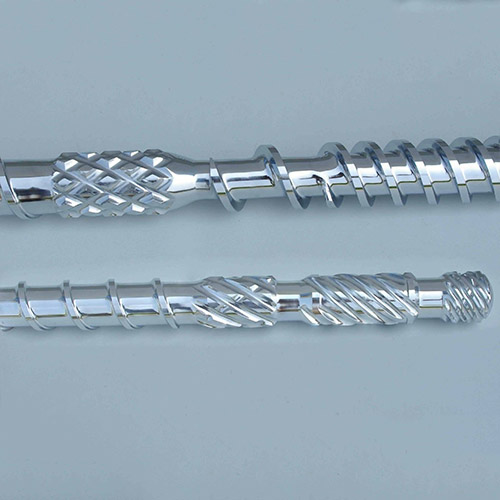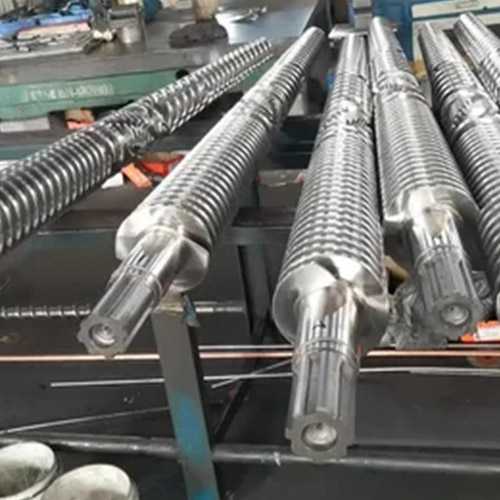04-07, 2021
Overflow of injection molding machine head, also known as flash, overflow, drape and so on, mostly occurs in the opening and closing position of the mold. Such as: the parting surface of the mold, the sliding part of the slider, the gap of the insert, the hole of the ejector, etc. If the overflow is not solved in time, it will be further expanded, resulting in the formation of local collapse of the impression die, resulting in permanent damage. The overflow of insert gap and ejector hole will also make the product stuck on the mold and affect the demoulding.
1. Equipment
(1) The real clamping force of the machine is insufficient. When selecting the injection molding machine, the rated clamping force of the machine must be higher than the tension formed by the longitudinal projection area of the injection molding product during injection, otherwise it will cause die expansion and flash.
(2) The poor adjustment of the clamping device, the failure of the elbow bar mechanism to straighten, the uneven clamping of the left and right or up and down, and the failure of the parallelism of the mold result in the situation that one side of the mold is tightly closed and the other side is not closely attached, and the flash will appear during the injection.
(3) If the parallelism of the die itself is not good, or the installation is not parallel, or the template is not parallel, or the force distribution and deformation of the pull rod are not uniform, all of these will cause the die closing is not tight and cause flash.
(4) Serious wear of the check ring, failure of the spring nozzle spring, excessive wear of the barrel or screw, failure of the cooling system at the feed port, resulting in "bridging" phenomenon, insufficient injection volume of the barrel setting, too small buffer pad, etc. may cause repeated flash, which must be repaired or replaced in time.
2. Mold
(1) The accuracy of parting surface is poor. The results show that the movable template (such as the middle plate) is warped; there are foreign bodies on the parting surface or protruding skid marks and burrs around the mold frame; the old mold fatigue collapse around the cavity due to the previous flash extrusion.
(2) The mold design is unreasonable. If the opening position of the mold cavity is too far away, the tension will occur on one side of the mold during injection, causing flash.
Plastic fluidity is too good, such as polyethylene, polypropylene, nylon, etc., in the molten state viscosity is very low, easy to enter the activity or fixed gap, requires high precision mold manufacturing.
On the premise of not affecting the integrity of the product, it should be placed on the center of mass symmetry as far as possible. Feeding in the thick part of the product can prevent the situation of missing material and flying edge at the same time. When there is a forming hole in or near the center of the product, it is customary to set a side gate on the hole. Because under the larger injection pressure, if the clamping force is insufficient, the supporting force in this part of the mold will be insufficient and slight warping will occur, resulting in flash. If there is a movable component on the side of the die, the projected area of the side is also affected by the forming pressure. If the supporting force is not enough, it will also cause flash.
The poor matching accuracy of sliding core and the offset of fixed core and cavity installation position will also cause flash. Poor cavity exhaust, no exhaust groove on the parting surface of the die, or the exhaust groove is too shallow, or too deep, or blocked by foreign matter will cause flash. For multi cavity mold, attention should be paid to the reasonable design of the gate of each porthole, otherwise it will cause uneven filling force and flash.
3. Technology
(1) The injection pressure is too high or the injection speed is too fast. Due to high pressure and high speed, the opening force of the die increases, resulting in overflow. The injection speed and injection time should be adjusted according to the thickness of the product. The thin product should be filled quickly with high speed, and no injection is needed after filling; the thick product should be filled with low speed, and the epidermis should be fixed before reaching the final pressure.
(2) Too much feeding causes flash. It is worth noting that do not inject too much molten material to prevent sags, so that sags may not be "filled", but flash will appear. This situation should be solved by prolonging injection time or holding time.
(3) If the temperature of barrel and nozzle is too high or the temperature of mold is too high, the viscosity of plastic will decrease and the fluidity will increase, which will cause flash in the case of flowing into the mold.
4. Raw materials
(1) Plastic viscosity is too high or too low may appear flash. Low viscosity plastics, such as nylon, polyethylene, polypropylene, etc., should improve the clamping force; high water absorption plastics or water sensitive plastics will greatly reduce the flow viscosity at high temperature, increase the possibility of flash, these plastics must be thoroughly dried; too much recycled materials will reduce the viscosity of plastics, and residual ingredients should be added when necessary. If the viscosity of the plastic is too high, the flow resistance will increase, resulting in a large back pressure to increase the cavity pressure, resulting in insufficient clamping force and flash.
(2) When the particle size of plastic raw materials is not uniform, the feeding amount will vary, and the parts will be dissatisfied or flash.



